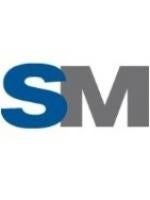In Fezzani v. Bear, Stearns & Co., Inc., No. 09-4414-cv, 2013 WL 1876534 (2d Cir. May 7, 2013), a 2-1 majority of a panel of the United States Court of Appeals for the Second Circuit held that plaintiffs’ failure to plead direct misrepresentations from defendant to plaintiffs was fatal to their market manipulation claim under Section 10(b) of the Securities Exchange Act of 1934, 15 U.S.C. § 78j(b), and Securities & Exchange Commission(“SEC”) Rule 10b-5, 17 C.F.R. § 240.10b-5, promulgated thereunder. This is the first decision from a Court of Appeals applying the strict limitations on the scope of primary liability set in recent decisions by the Supreme Court to claims involving market manipulation.
From 1992 through 1996, a now-defunct broker-dealer, A.R. Baron (“Baron”), executed a “pump and dump” scheme involving high pressure “cold calls” to potential customers, aimed at inducing the customers to purchase securities in initial public offerings of small, unknown companies with negligible profits. Baron’s salespeople would represent deceptively that such stocks were part of an active, rising market in which prices were fairly set by arms-length transactions. In reality, the “market” was a result of a series of artificial trades arranged by Baron to generate the façade of a rising market. These practices defrauded customers out of millions of dollars, and eventually led to the criminal convictions of a number of its former officers, directors and key employees.
Plaintiffs, a group of individual investors, alleged that Baron and its clearing broker, Bear, Stearns & Co, Inc. (“Bear Stearns”), falsely represented the market surrounding the securities at issue, and that defendant Isaac R. Dweck (“Dweck”) enabled Baron, through short-term cash infusions and financing, to “park” securities in his accounts, for which he was rewarded with ownership in companies on a preferential basis and returns on the parking arrangements. Plaintiffs also alleged that Dweck’s providing of funds to Baron prolonged Baron’s fraudulent activity. Plaintiffs made no claim for recovery from Dweck for damages caused by the parking of specific securities, but instead sought to impose liability on Dweck for all of Baron’s deceptive activities; in other words, plaintiffs made no attempt to connect particular trades to Dweck’s parking.
The United States District Court for the Southern District of New York held that the plaintiffs’ broad allegations that Dweck was substantially funding and participating in Baron’s fraudulent transactions did not show how plaintiffs relied upon misrepresentations or omissions by Dweck, and therefore, failed to state a claim against Dweck under Section 10(b) and Rule 10b-5. The district court noted that plaintiffs had asserted that Dweck made investments in Baron securities, assisted in the parking transactions and allegedly introduced new co-conspirators to the fraud, and that the plaintiffs claimed generally that the parking transactions and overall fraud caused the price of Baron’s securities to artificially inflate, creating damage to plaintiffs when they purchased the eventually worthless stock. However, the district court held, none of those items satisfied the requirement under Stoneridge Investment Partners, LLC v. Scientific-Atlanta, Inc., 552 U.S. 148 (2008) (see blog article here), that plaintiffs allege a false material misrepresentation or omission, and reliance thereupon. Accordingly, the district court dismissed the claim for misrepresentations or omissions under Section 10(b) and Rule 10b-5 against Dweck. The district court likewise dismissed plaintiffs claim for market manipulation against Dweck due to a lack of alleged reliance on Dweck’s fraudulent behavior.
The Second Circuit affirmed. As the district court had noted, the absence of allegations of communications between the plaintiffs and Dweck was problematic. The Second Circuit observed that in plaintiffs’ claim against Dweck for all damages caused by Baron, plaintiffs did not made any claim for Dweck’s liability under respondeat superior or another common law theory of vicarious liability. Because aiding and abetting liability is not available in private actions under Section 10(b) and Rule 10b-5, the Court held, Dweck could only be liable as a primary violator. The Second Circuit recognized that under Stoneridge “an allegation of acts facilitating or even indispensable to a fraud is not sufficient to state a claim if those acts were not the particular misrepresentations that deceived the investor.” Plaintiffs were required to allege actions by Dweck that were more than knowing participation in, or facilitation of, Baron’s fraudulent scheme. Looking further to Supreme Court precedent in Janus Capital Group, Inc. v. First Derivative Traders, 131 S. Ct. 2296 (2011) (see blog article here), the Court held that “only the person who communicates the misrepresentation is liable in private actions under Section 10(b),” even in a market manipulation case.
Here, although plaintiffs alleged that Dweck was part of a group that engaged in phony trading activity, they did not and could not allege “that any plaintiff was told of Dweck’s artificial trading, or purchased securities in specific reliance on such trading.” Rather, Baron and Bear Stearns were the only parties that had directly given the plaintiffs representations about the phony market. Plaintiffs alleged that Dweck had knowledge of some artificial trades, that he participated in them and that he actively facilitated Baron’s fraudulent scheme. But because only Baron or Bear Stearns — but not Dweck — communicated the artificial price information to plaintiffs, and their allegations were insufficient to state a Section 10(b) and Rule 10b-5 claim against Dweck.
The dissent disagreed with the majority’s conclusion that Supreme Court precedent required a direct communication of false information to the plaintiffs in the context of a claim for market manipulation. Further, the dissent argued the majority ignored that Dweck was insider of Baron with primary liability under Section 10(b) for engaging in a manipulative scheme.
The Fezzani majority opinion is significant because it is the first decision from a Court of Appeals to apply the strict limitations on the scope of primary liability set in Stoneridge and Janus to claims involving market manipulation. In light of the dissenting opinion on this important issue, we expect plaintiffs to make a strong request for rehearing en banc and/or petition for certiorari to the Supreme Court.


 />i
/>i

